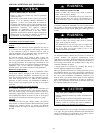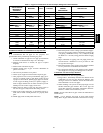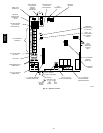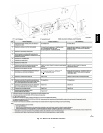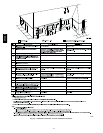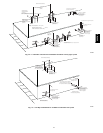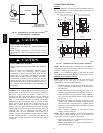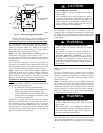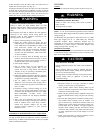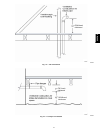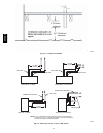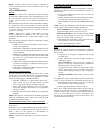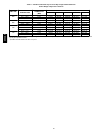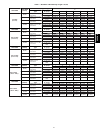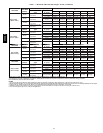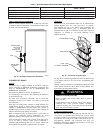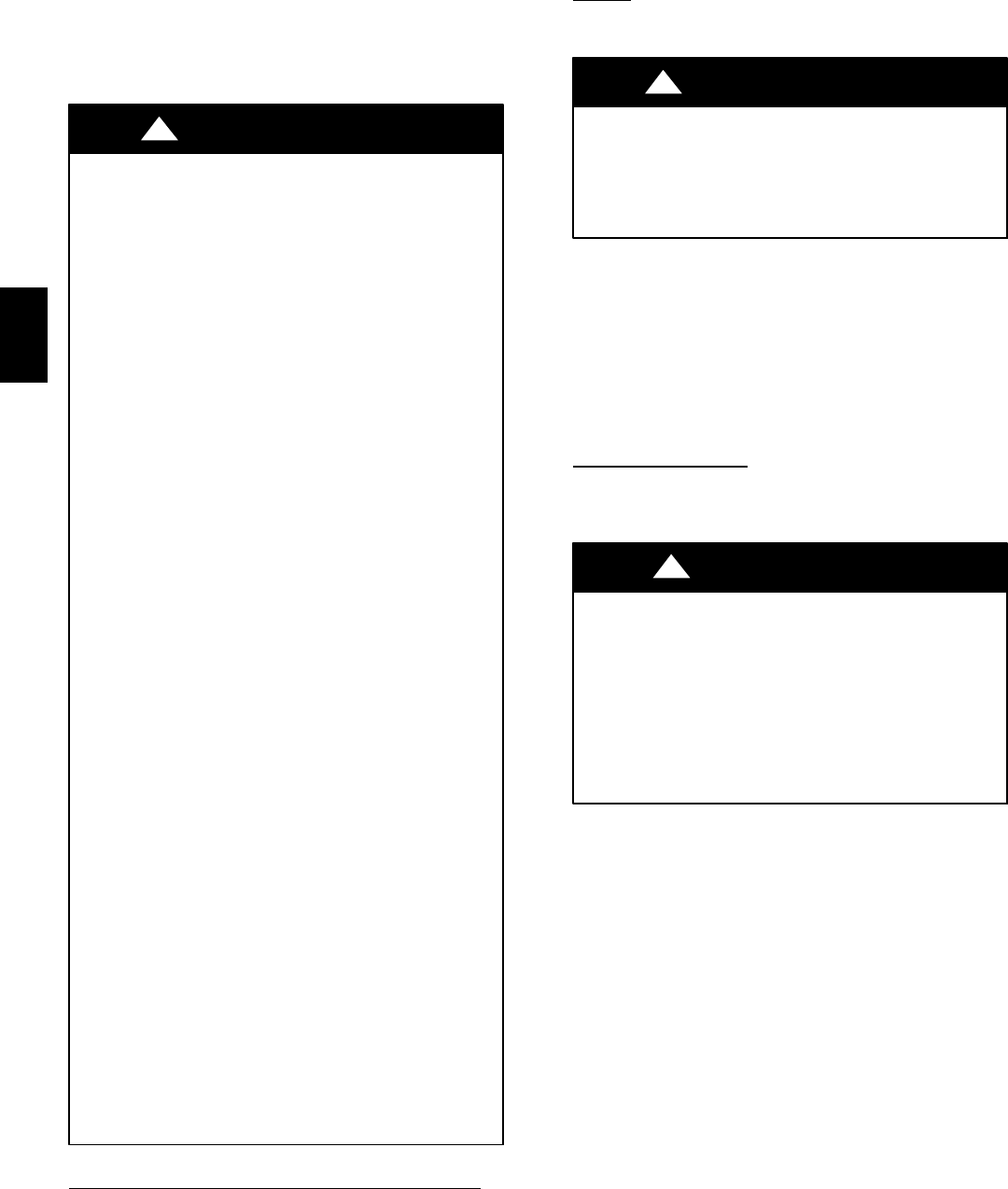
36
or other materials. Screen the elbow with a wire mesh screen no
smaller than 3/8--inch square. (See Fig. 41.)
Crawlspace terminations require the open end of the combustion
air intake pipe to point downward. Maintain 3 inches (76 mm) of
clearance below the floor joist insulation and 12 inches (305 mm)
above the grade. Screen the elbow with a wire mesh screen no
smaller than 3/8-- in. (10 mm) square. (See Fig. 42 and 43.)
CARBON MONOXIDE POISONING HAZARD
Failure to follow the steps outlined below for each
appliance connected to the venting system being placed into
operation could result in carbon monoxide poisoning or
death.
The following steps shall be followed for each appliance
connected to the venting system being placed into
operation, while all other appliances connected to the
venting system are not in operation:
1. Seal any unused openings in venting system.
2. Inspect the venting system for proper size and
horizontal pitch, as required in the National Fuel Gas
Code, ANSI Z223.1--2006/NFPA 54-- 2006 or the
CSA B149.1--05, Natural Gas and Propane
Installation Code and these instructions. D etermine
that there is no blockage or restriction, leakage,
corrosion and other deficiencies, which could cause
an unsafe condition.
3. As far as practical, close all building doors and
windows and all doors between the space in which
the appliance(s) connected to the venting system are
located and other spaces of the building.
4. Close fireplace dampers.
5. Turn on clothes dryers and any appliance not
connected to the venting system. Turn on any
exhaust fans, such as range hoods and bathroom
exhausts, so they are operating at maximum speed.
Do not operate a summer exhaust fan.
6. Follow the lighting instructions. Place the appliance
being inspected into operation. Adjust the thermostat
so appliance is operating continuously.
7. Test for spillage from draft hood equipped
appliances at the draft hood relief opening after 5
minutes of main burner operation. Use the flame of a
match or candle.
8. If improper venting is observed during any of the
above tests, the venting system must be corrected in
accordance with the National Fuel Gas Code, ANSI
Z223.1--2006/NFPA 54-- 2006 and/or CSA
B149.1--05, Natural Gas and Propane Installation
Code.
9. After it has been determined that each appliance
connected to the venting system properly vents when
tested as outlined above, return doors, windows,
exhaust fans, fireplace dampers and any other
gas--fired burning appliance to their previous
conditions of use.
!
WARNING
Combustion Air Termination--Direct Vent / 2-- Pipe System
Combustion air pipe must terminate outside the structure with the
vent pipe as shown in Fig. 36. Follow the clearance requirements
shown in Fig. 39. Refer to Vent Termination section for complete
details on termination options.
VENT PIPE
General
Furnace vent connection must be attached as shown in Fig. 39.
CARBON MONOXIDE POISONING AND
PROPERTY DAMAGE HAZARD
Failure to follow this warning could result in personal
injury or death.
Vent pipes must be airtight.
!
WARNING
NOTE: A 2-- in. (51 mm) diameter pipe must be used within the
furnace casing. Make all pipe diameter transitions outside furnace
casing per Fig. 38.
The minimum vent pipe length f or these furnaces is 5 ft. (1.5M)
Short pipe lengths (5--8 ft. or 1.5M--2.4M) may discharge
condensate droplets. These condensate droplets may be
undesirable. A 12--in. (305 mm) minimum offset pipe section is
recommended to reduce excessive condensate droplets from
exiting vent pipe outlet. (See Fig. 44.)
Attachment of Vent
Pipe
NOTE: Vent pipe system has the same diameter and same length
as combustion air pipe as mentioned in section “Combustion Air
Pipe and Vent Pipe Diameter.”
UNIT DAMAGE HAZARD
Failure to follow this caution may result in unit component
damage.
Inducer housing outlet cap must be installed and fully
seated against inducer housing. Clamp must be tightened to
prevent any condensate leakage.
Vent pipe must be installed and fully seated against inducer
housing. Clamp must be tightened to prevent any
condensate leakage.
CAUTION
!
1. Determine location of vent pipe connection to inducer
housing as shown in Fig. 39 for application.
2. Verify synthetic rubber inducer housing outlet cap and
clamp are installed on appropriate unused inducer housing
connection and that clamp is tight.
3. Install vent pipe grommet (factory-- supplied in loose parts
bag) into selected furnace casing vent pipe hole. (See Fig.
28.)
4. Be certain that mating surfaces of inducer housing connec-
tion synthetic rubber coupling, and 2-- in. diameter vent
pipe are clean and dry. Assemble the synthetic rubber vent
coupling (with 2 loose clamps) onto inducer housing con-
nection. Insert the 2--in. diameter vent pipe through the
synthetic rubber coupling and fully into inducer housing
connection until it touches a stop inside the inducer hous-
ing outlet. Tighten the screws on both clamps to 15--in lb.
of torque.
5. Install casing hole filler cap (factory--supplied in loose
parts bag) in unused vent pipe casing hole.
355CAV



